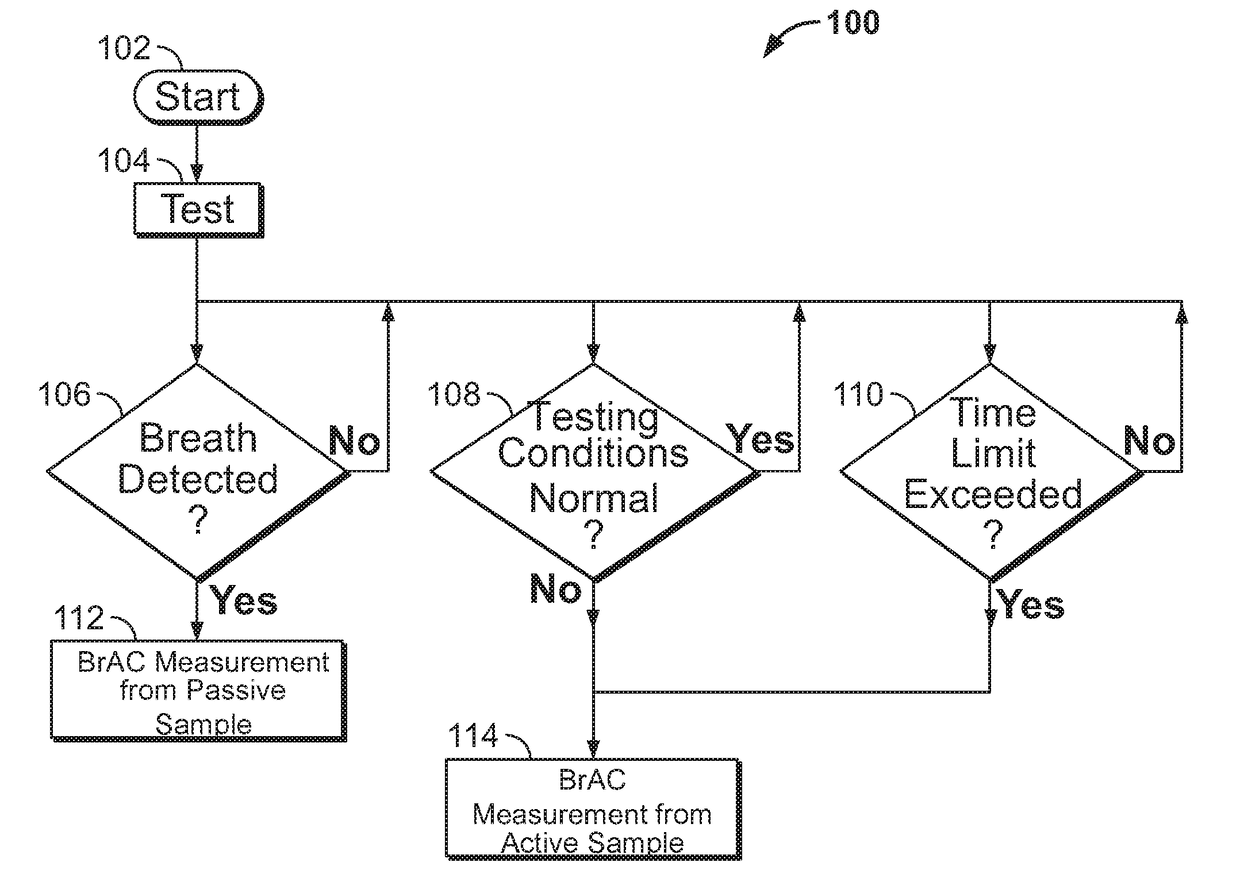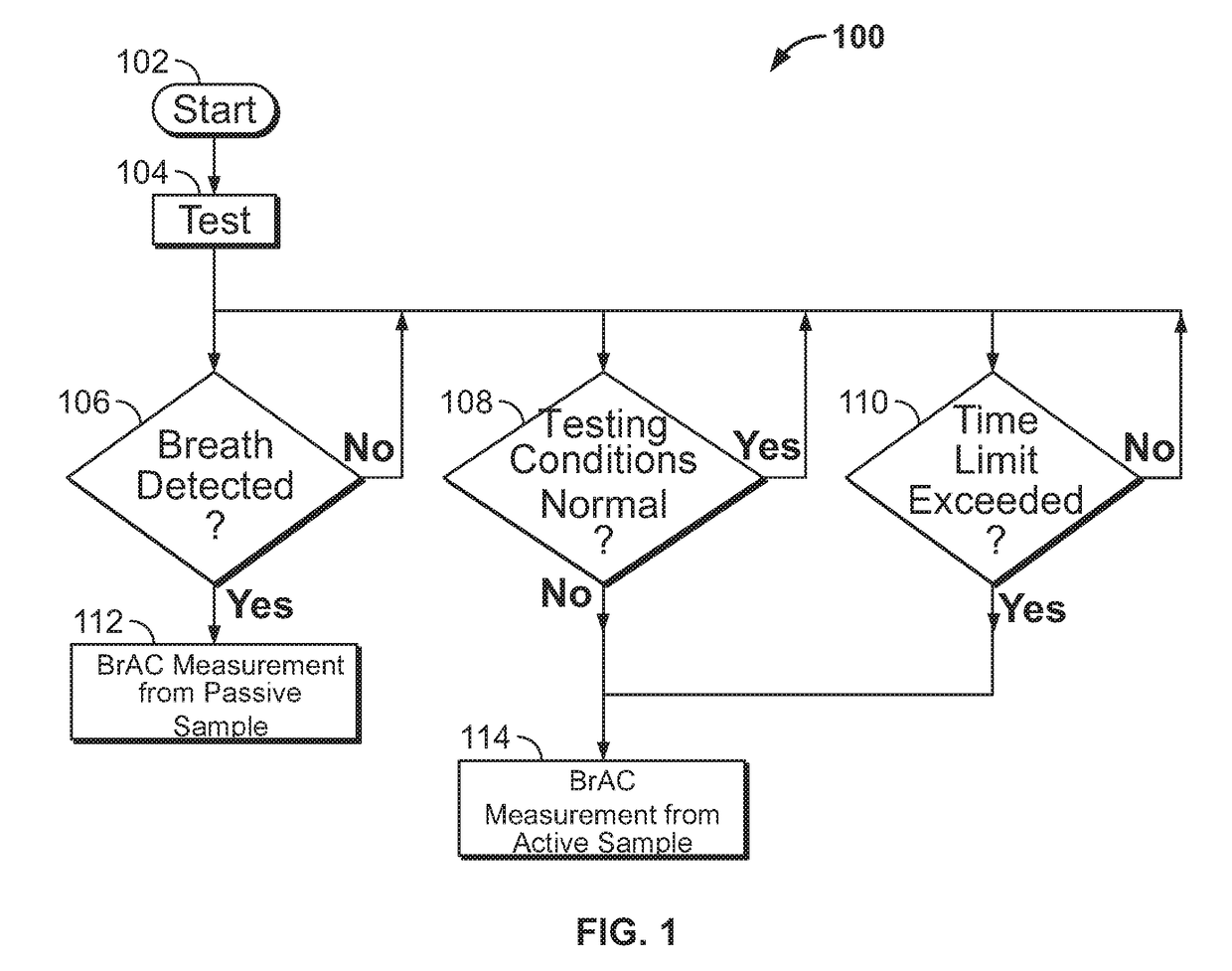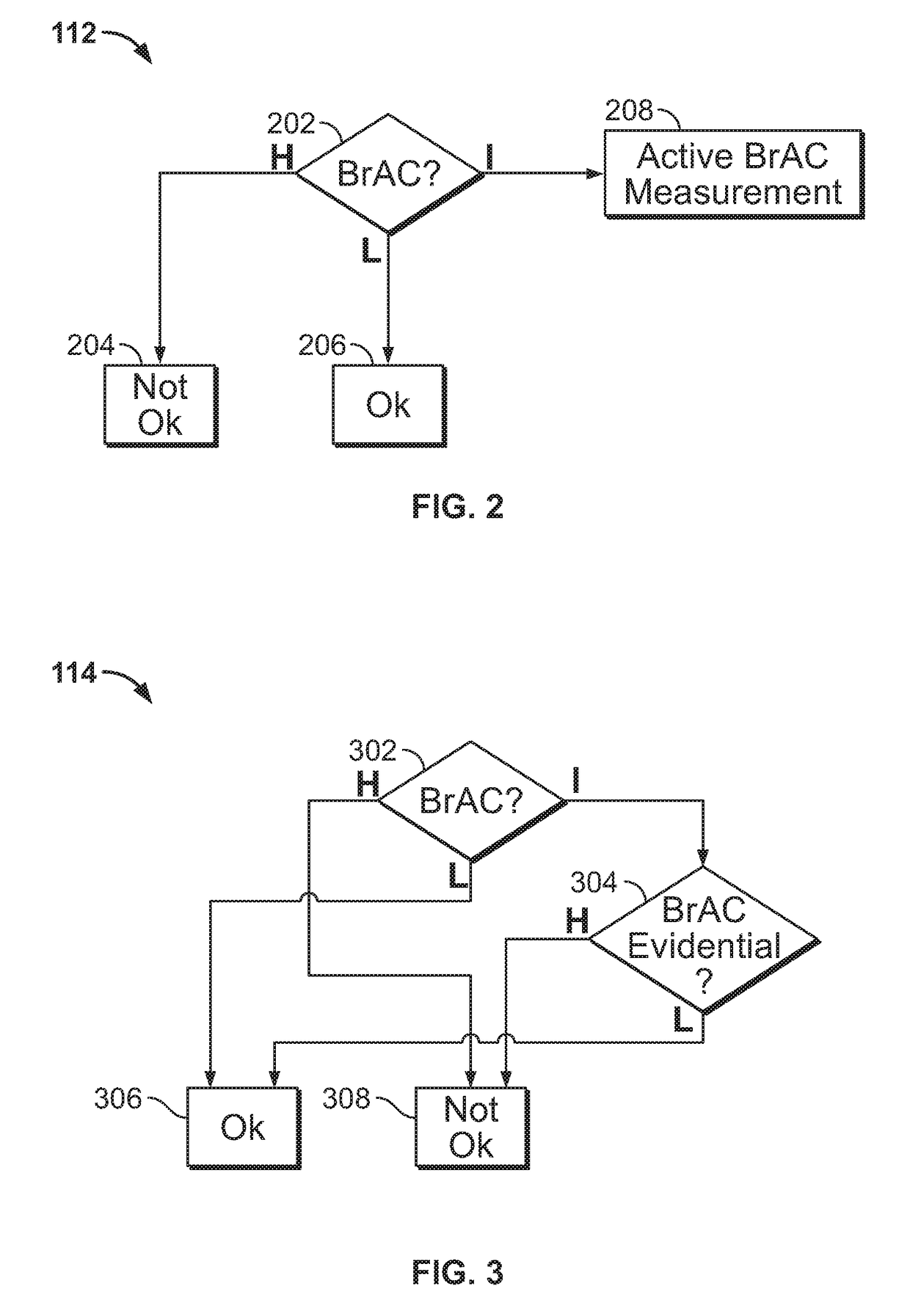Sensor system for passive in-vehicle breath alcohol estimation
a sensor system and in-vehicle breath alcohol technology, which is applied in the direction of instruments, transportation and packaging, tractors, etc., can solve the problems of not being able to perform an accurate passive breath test and the air within the vehicle not accurately reflecting the brac of the driver, so as to prevent attempts to defeat the system
- Summary
- Abstract
- Description
- Claims
- Application Information
AI Technical Summary
Benefits of technology
Problems solved by technology
Method used
Image
Examples
Embodiment Construction
[0018]Administering breath tests to drivers is an effective screening method to reduce drunk driving and drunk driving related deaths. In breath testing, a subject exhales air into a sensor or measuring device for a sufficient time and of a sufficient volume to achieve breath flow that originates from the alveoli of the lungs, where substances such as ethyl alcohol (EtOH) in the blood are exchanged with air. The sensor or measuring device then measures the alcohol content in the air, which is related to blood alcohol through a conversion algorithm.
[0019]Existing breath based alcohol testing technologies require the driver to deliver a forced expiration at almost full vital capacity. This requires substantial time and effort, especially for people with limited lung capacity. For hygienic reasons, the mouthpiece used in existing breath testing devices may also need to be cleaned and replaced after multiple uses. Additionally, environmental conditions, such as wind, temperature, the pr...
PUM
 Login to View More
Login to View More Abstract
Description
Claims
Application Information
 Login to View More
Login to View More - R&D
- Intellectual Property
- Life Sciences
- Materials
- Tech Scout
- Unparalleled Data Quality
- Higher Quality Content
- 60% Fewer Hallucinations
Browse by: Latest US Patents, China's latest patents, Technical Efficacy Thesaurus, Application Domain, Technology Topic, Popular Technical Reports.
© 2025 PatSnap. All rights reserved.Legal|Privacy policy|Modern Slavery Act Transparency Statement|Sitemap|About US| Contact US: help@patsnap.com



